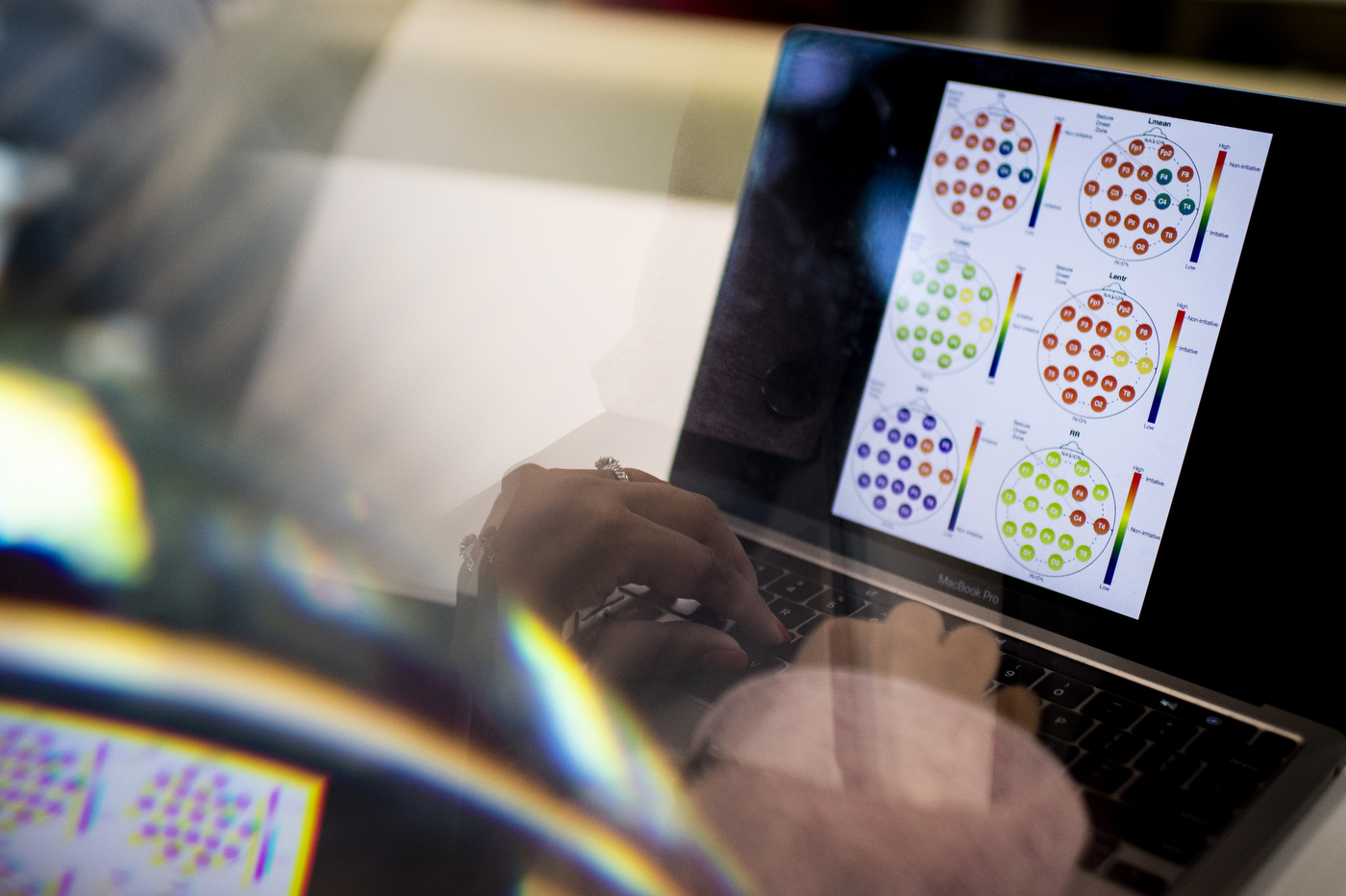Epilepsy treatment can be trial and error. She has a way to change that.

When Aarti Sathyanarayana shadowed a neurologist at Boston Children’s Hospital, it sparked an idea that could change how doctors treat epilepsy.
Sathyanarayana saw how doctors were evaluating whether they’d picked the right medication for epilepsy in a patient. It’s largely a trial-and-error approach, she says. The doctor will prescribe medication and then the patient will return home and track the number of seizures that they experience, she explains, sometimes with a monitoring device to help, and sometimes manually. If it’s not effective, the doctor will repeat the process with another medication or dosage until they find the right treatment for that patient’s body.

Aarti Sathyanarayana, assistant professor in the Bouvé College of Heath Sciences and Khoury College of Computer Sciences, works on research in the ISEC building. Photo by Matthew Modoono/Northeastern University
“They’re risking their life every time they have a seizure,” says the assistant professor of health sciences at Northeastern’s Bouvé College of Heath Sciences and Khoury College of Computer Sciences.
There has to be a better way to understand proactively if the medication is working, she thought.
Leveraging her background in digital health signals, Sathyanarayana is working to develop a way to quantitatively measure whether anti-seizure medications are effective for patients with epilepsy on a much shorter timeframe—on the order of minutes rather than months.
The key: identifying a signature in brain activity that quantifies a patient’s likelihood of having a seizure. With that kind of insight, Sathyanarayana says, doctors could use electroencephalography (EEGs) in near real time after prescribing a new medication to patients with epilepsy to see whether it is working.
And now, as described in a new paper published in the Journal of Clinical Neurophysiology, Sathyanarayana and colleagues have come up with a method to do just that.

Aarti Sathyanarayana, assistant professor in the Bouvé College of Heath Sciences and Khoury College of Computer Sciences. Photo by Matthew Modoono/Northeastern University
“Now doctors could make quicker adjustments to get people the right medication that works for them,” Sathyanarayana says.
The study was conducted on EEG data from pediatric patients under long-term monitoring while they were being weaned off medication in preparation for a procedure. Sathyanarayana devised an analysis that looks at the brain electrodynamics during different intervals as the patient is being weaned off the medication.
“We computed a set of nonlinear dynamic metrics across these two different EEGs, and then compared them to see if we could identify a change,” she says.
The goal, Sathyanarayana says, is to be able to run the algorithm she has created to identify whether or not a patient’s propensity to seize is increasing or decreasing, high or low. This could have implications beyond medication, she says, as someone could use EEG monitoring to understand what factors in their life increase their propensity to have a seizure and which do not.
Sathyanarayana has been working to identify a digital biomarker in brain activity that doctors can use to indicate a patient’s propensity to seize. “This is a candidate digital biomarker,” she says. “It hasn’t been clinically validated yet.” That’s the next step, she says.
The concept of identifying a patient’s propensity to seize (called “epileptogenicity”) isn’t new, she says.
“What’s different is we’re trying to measure it by discovering a digital biomarker for it, we’re trying to quantify something that’s been an abstract terminology in the past versus something that you could measure.”
In 2021, Sathyanarayana won a Young Investigator Award from the American Clinical Neurophysiology Society for her work on this project.
“There’s a lot more to be done,” she says. “We started looking at patients with and without epilepsy, then we started looking within a patient who has epilepsy…Another interesting thing would be to look at right when they first start to get epilepsy and then later, and how is that epilepsy progressing.”
For media inquiries, please contact media@northeastern.edu.





